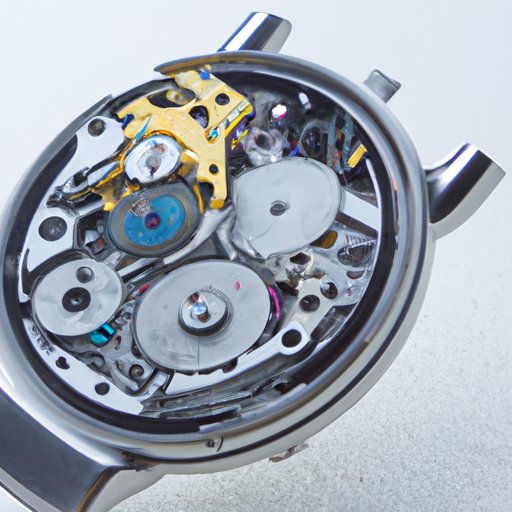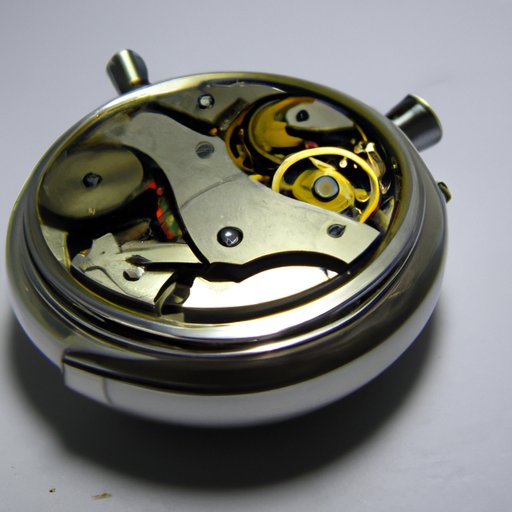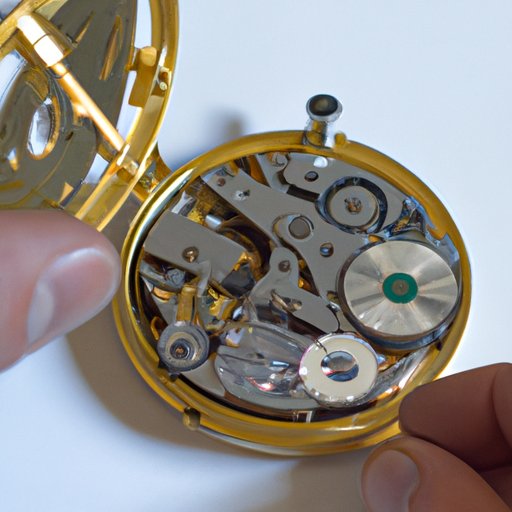Introduction
The wristwatch is an essential part of modern life. It’s a practical accessory that helps us keep track of time and stay organized. But what exactly is the mechanism that makes a wristwatch tick? In this article, we explore the inner workings of a wristwatch and examine how it works.

Explaining the Basics of How a Wristwatch Works
At its most basic level, a wristwatch works by converting energy into motion. This energy is typically supplied either through a battery or a mechanical spring. The motion is then used to drive the hands on the watch face, which indicate the current time.
To understand how a wristwatch works, we need to look at the individual components and their functions. Each component plays an important role in keeping the watch accurate.

Breaking Down the Inner Workings of a Wristwatch
The first component of a wristwatch is the movement. This is the part of the watch that supplies power to all the other components. It consists of several interconnected parts including gears, a balance wheel, an escapement, and a mainspring. The movement is responsible for keeping the watch running accurately.
Gears are used to transfer the energy from the movement to the hands. The balance wheel is a small wheel that oscillates back and forth, helping to regulate the speed of the watch. The escapement is a device that controls the release of energy to the hands. Finally, the mainspring is a tightly wound coil of metal that provides the watch with power.
The hands on the watch face indicate the current time. They are connected to the gears and driven by the movement. The dial is the part of the watch that houses the hands and displays the time.
The crystal is a transparent cover that protects the watch face from scratches and other damage. The case is the outer covering of the watch and is usually made of metal or plastic.
Examining the Types of Movements Used in Wristwatches
There are three main types of movements used in wristwatches: automatic, quartz, and mechanical. Automatic movements use the natural motion of the wearer’s arm to wind the mainspring. Quartz movements use an electronic oscillator powered by a battery. Mechanical movements are powered by a manually wound mainspring.
A Comprehensive Guide to Setting and Adjusting a Wristwatch
Setting and adjusting a wristwatch can be a bit tricky. The first step is to wind the watch. This can be done manually or automatically depending on the type of movement. Once the watch is wound, the time can be set by turning the crown. The date can be adjusted by pressing the crown button. If the watch has an alarm, it can be set by pressing the appropriate button.

The Benefits and Limitations of a Mechanical Wristwatch
Mechanical watches have several advantages over other types of watches. They tend to be more accurate than quartz or automatic watches and are generally more durable. They also have a classic, timeless look that will never go out of style. However, they do require regular maintenance and servicing, and they can be expensive.
Conclusion
A wristwatch is a complex and fascinating piece of machinery. By understanding how it works, we can appreciate the intricate mechanisms that make it tick. From movements to settings and adjustments, there’s a lot to know about a wristwatch. We hope this article has helped you gain a better understanding of this amazing timepiece.
(Note: Is this article not meeting your expectations? Do you have knowledge or insights to share? Unlock new opportunities and expand your reach by joining our authors team. Click Registration to join us and share your expertise with our readers.)
